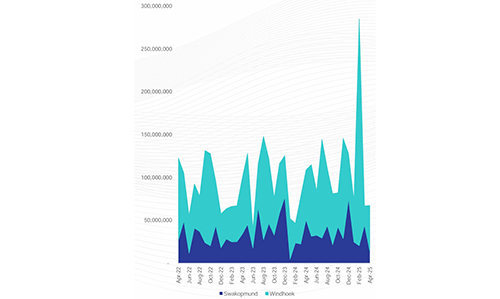Construction is expected to be the fastest-growing domestic sector this year, as it is forecast to expand by 8.5%, despite accounting for just 1.4% of gross domestic product (GDP) in 2024.
Commenting on the latest building statistics, stock brokerage Simonis Storm (SS) noted the vigorous growth outlook is supported by a favourable combination of monetary easing, accelerated public infrastructure investment and renewed private sector confidence.
As such, SS expects the local construction industry’s output to surpass N$4 billion, with momentum largely concentrated in residential developments, commercial real estate and government-led capital projects.
In its report on building statistics, SS noted that since late 2024, the Bank of Namibia had cut rates by 100 basis points, which has helped to alleviate financing constraints. SS added that another reduction is expected in the second half of 2025, which would contribute to developers finding it more viable to finance commercial and housing projects, and households accessing more affordable mortgage loans. These factors support both homeownership and building upgrades.
“In Windhoek, construction activity remains relatively steady, despite a sharp drop in approved plan values during April. So far this year, investment has been concentrated in residential additions and housing developments, especially in growth areas like Katutura, Otjomuise and Kleine Kuppe. While smaller projects dominate, larger developments will remain essential for boosting overall sector value. In Swakopmund, the tone is cautiously optimistic,” SS stated.
Simonis further pointed out that while monthly building approvals have levelled off, year-to-date growth of 69% compared to 2024 signals a potential recovery in the building sector.
“To maintain this momentum, however, a stronger pipeline of commercial and industrial developments is needed, alongside targeted efforts to attract investors and unlock access to development finance. On the fiscal side, the 2025/26 national budget allocated N$12.8 billion towards development spending, much of which is expected to filter into the construction sector through key infrastructure projects,” the analysts added.
The key infrastructure projects including water and energy, have been budgeted for an estimated N$5 billion. This is for projects such as the Outapi water treatment plant expansion, the Ondangwa–Omutsegwonime pipeline replacement, preparations for a second desalination plant in Erongo, a 100MW solar power plant, and the much-anticipated Baynes Hydropower Station that could increase local electricity-generation by 600MW.
“In summary, while 2025 holds promise for Namibia’s construction sector, realising that growth will depend on strong follow-through from streamlined project rollouts and stable pricing conditions to sustained credit availability and investor confidence,” Simonis added.


